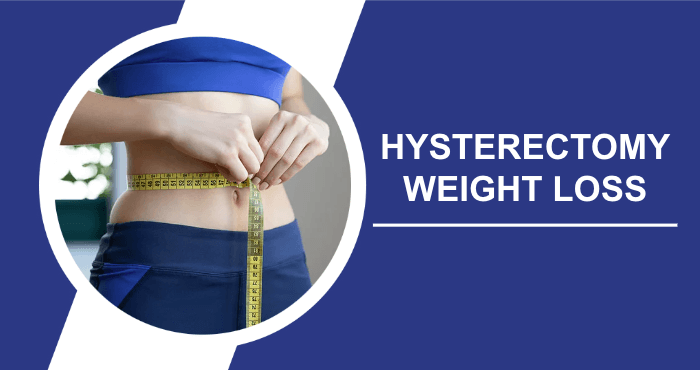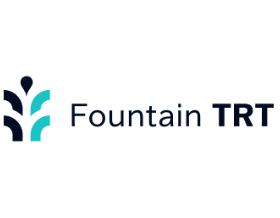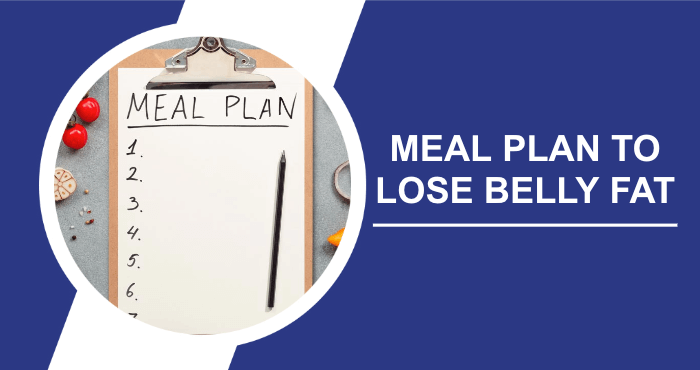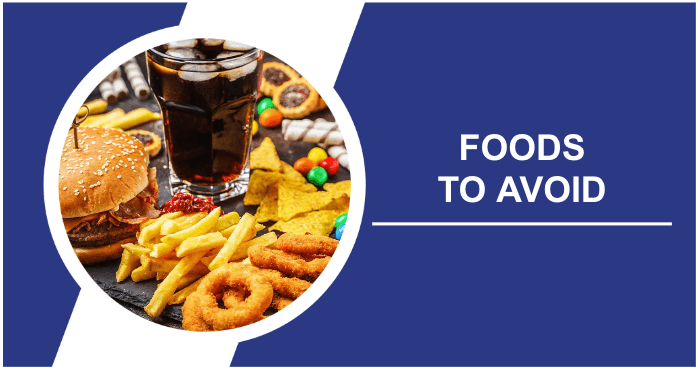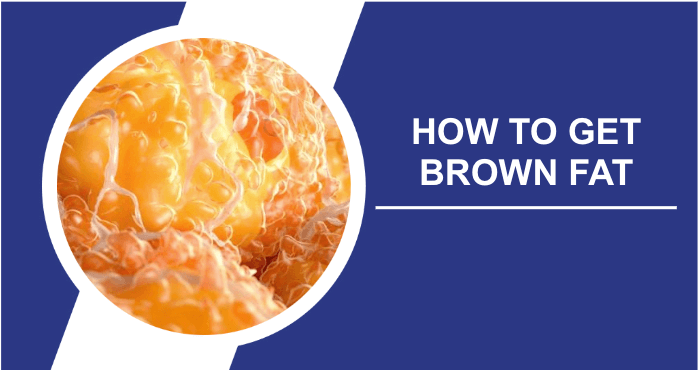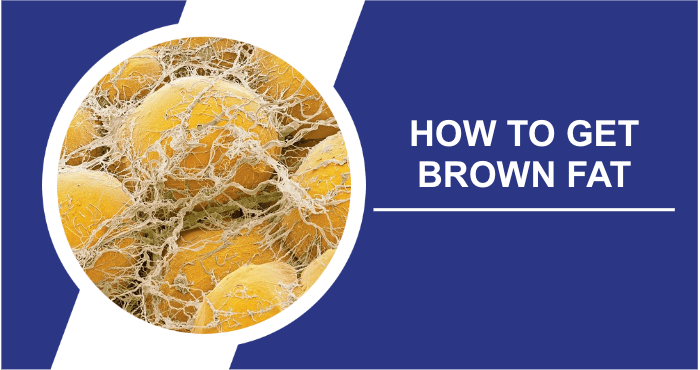The transition into your forties is a significant life stage, marked by a wealth of accumulated experience and wisdom. However, it also presents its own set of challenges, particularly in the area of muscle development. As the body naturally undergoes changes, such as a gradual decline in testosterone and increased instances of pain and discomfort, it becomes imperative for men in their forties to adjust their fitness regimens accordingly.
In this article, we present a personalized muscle-building exercise plan designed specifically for men in their forties. Instead of being a time of decline, your forties can be a time of progress. By understanding your body’s unique needs during this phase and incorporating specific training routines, dietary adjustments, and recovery strategies, you can redefine what it means to be in optimal physical shape.
Whether you are a seasoned fitness enthusiast or someone embarking on a journey toward a healthier lifestyle, this guide will equip you to sculpt and strengthen your physique. It is never too late to start on the path to achieving the best physical condition of your life.
Forty Fitness: Embracing Change And Building Strength
Entering your forties means a rich reservoir of life experience and wisdom. But it also brings unique challenges, especially in the area of muscle development. Hormonal changes and aches and pains become more prevalent, requiring adjustments to your fitness routine. This article offers a customized muscle-building plan for men in their forties.
Don’t think of it as a decline, but as an opportunity for progress. Understand your body’s needs, incorporate specific exercises, adjust your diet, and prioritize recovery. Whether you’re a fitness enthusiast or just starting out, this guide will empower you to redefine your physical shape. It’s never too late to begin your journey to peak physical condition.
What Is Generally Needed To Build Muscle Mass?
Building muscle mass generally requires a combination of consistent strength training, a balanced diet rich in protein and nutrients, and adequate rest and recovery. It’s like sculpting a work of art; you need the right tools (exercise), quality materials (nutrition), and time for your masterpiece to take shape (rest). Patience and dedication are your best allies in this creative process.
How Does The Male Metabolism Change In The 40s?
In your 40s, the male metabolism begins to show some noticeable changes. Typically, your metabolism slows down gradually, making it easier to gain weight if you maintain the same eating habits and activity levels as in your younger years. Muscle mass tends to decrease, which can further contribute to a decrease in metabolism because muscle burns more calories than fat.
Hormonal changes, such as declining testosterone levels, can also play a role in these metabolic changes. To counteract these changes, it is important to prioritize a balanced diet and regular exercise to maintain a healthy weight and overall well-being as you age.
Is It Possible To Build Muscles After 40?
Let’s start with the million dollar question. Can you build muscle in your 40s? The answer is yes. Building muscle in your 40s is not only possible, but extremely beneficial to a man’s well-being. While the body’s hormonal dynamics may change with age, consistent strength training and a balanced diet can still lead to muscle development. In a 2009 study, 24 college-aged men (18-22) and 25 middle-aged men (35-50) underwent an identical 8-week muscle-building program.
At the end of the eight weeks, both groups showed comparable muscle growth and improved strength. The only difference between the two groups was that the middle-aged men experienced a greater reduction in body fat, in addition to equivalent gains in strength and muscle mass. Now, as a certified personal trainer, I want to avoid setting false expectations. The amount of exercise experience you have may have a greater impact on future gains than age.
If you’ve been a regular at the gym for two decades, your potential for muscle development in your 40s may be less than that of a college-age beginner. The closer you are to your genetic potential, the harder it is to progress. However, maintaining muscle is just as important as you age. Contrary to popular belief, metabolism does not naturally decline with age.
Research shows that metabolic stability persists from age 20 to 60. The only change in metabolism in adults between the ages of 20 and 60 is due to a decrease in lean body mass and energy expenditure. The decline in metabolism with age is not a result of age itself, but rather a result of loss of muscle mass and decreased physical activity.
Common Muscle Building Challenges For Men In Their 40s
Although building muscle in your 40s is possible, it comes with some additional challenges. Fortunately, I’ve listed the solutions for each one to help you stay on track with your goals:
Increased Recovery Time
Men in their 40s often experience increased recovery time after intense strength training due to changes in hormone levels and a potential decrease in overall body resilience. While this may sound like a big challenge, it simply requires more intentional programming.
If you’re in your 40s, it’s important to prioritize adequate rest between workouts, incorporate effective recovery strategies such as proper nutrition, hydration, and sleep, and consider adjusting the intensity and frequency of your workouts to meet your body’s changing needs.
Injuries/Joint Problems
Men may be more susceptible to injuries and joint problems as they age, which can hinder muscle-building efforts. Joint stiffness and decreased flexibility can occur, so it is important to incorporate dynamic stretching, proper range of motion, and strategic exercise selection into their fitness routine. In addition, focusing on proper form during exercise can help minimize the risk of injury and support long-term joint health.
Balance Work And Family Responsibilities
Balancing work and family responsibilities can be a significant challenge for men in their 40s who are trying to build muscle. When you have people depending on you, your life can’t revolve around a gym schedule. Effective time management and planning become critical to maintaining a consistent routine. Incorporating quick and efficient workouts, involving family members in physical activities, and setting realistic goals can help balance family and fitness commitments.
Low Testosterone
Age is the most significant factor in low testosterone. Men’s testosterone levels naturally decline as they age, with levels starting to drop around age 30 and continuing to decline by about 1% per year. If you are experiencing symptoms such as fatigue, low libido, and loss of strength, get your testosterone checked.
Seeking medical help to improve your testosterone levels can go a long way toward helping you look and feel your best. A great place to start is by getting your testosterone checked with a personalized Fountain TRT evaluation. Or check out the best online TRT clinics. You can correct your low T levels from the comfort of your own home.
Optimal Training Split For Men In Their Forties
The most effective workout regimen for men in their forties entails a three-day split routine. Weightlifting sessions will take place on Monday, Wednesday, and Friday, while high-intensity cardio will be performed on Saturday. This schedule is designed to ensure ample recovery time between workouts. On Monday and Friday, the focus will be on the upper body, while Wednesday will be dedicated to leg exercises.
- Monday: Chest / Back / Core
- Tuesday: Rest Day
- Wednesday: Quadriceps / Hamstrings / Calves / Core
- Thursday: Rest Day
- Friday: Shoulders / Arms / Core
- Saturday: High-Intensity Interval Training (HIIT) Cardio
- Sunday: Rest Day
The Ideal Exercise Plan For Men In Their Forties
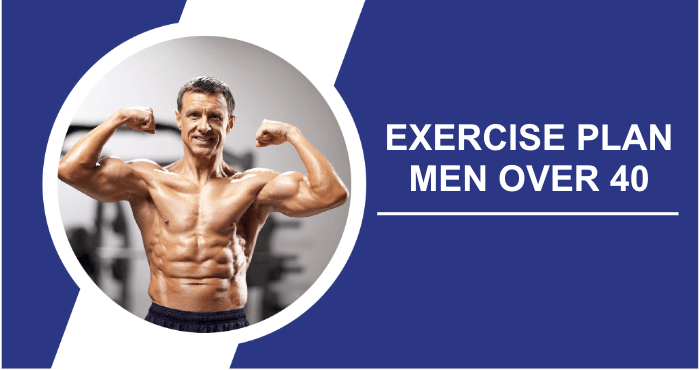
Below is a comprehensive workout plan tailored for men in their forties. If any exercises in the program cause discomfort or pain, feel free to substitute them with similar movements targeting the same muscle groups.
Tuesday, Thursday, and Sunday are designated as rest days, but if you desire some activity on these days, consider Low-Intensity Steady State (LISS) cardio, such as jogging, cycling, or using the elliptical machine. For those seeking core exercise ideas, some excellent options include barbell roll-outs, dead bugs, bicycle crunches, planks, leg raises, and reverse crunches.
Monday: Chest/Back/ABS
- Cable Crossover 3 x 10-12
- Cable Lat Extension 3 x 10-12
- Incline Dumbbell Bench Press 3 x 8-10
- Dumbbell Row 3 x 8-10
- Bodyweight Push-ups 3 x to failure
- Neutral Grip Lat Pulldown 3 x 8-10
- 1-2 Core Exercises of Choice 3-4 sets
Wednesday: Quadriceps/Hamstrings/Calves/Core
- Leg Extension 3 x 10-12
- Leg Curl 3 x 10-12
- Back Squat or Leg Press 3 x 8-10
- Romanian Deadlift 3 x 10-12
- Dumbbell Reverse Lunges 3 x 8-10 each leg
- Seated or Standing Calf Raise 3 x 10-12
- 1-2 Core Exercises of Choice 3-4 sets
Friday: Shoulders/Arms/Core
- Dumbbell Lateral Raise 3 x 10-12
- Standing Dumbbell One Arm Shoulder Press 3 x 6-8
- Dumbbell Incline Curl 3 x 10-12
- Cable Overhead Triceps Extension 3 x 10-12
- Preacher Curl 3 x 8-10
- EZ Bar Lying Triceps Extensions 3 x 8-10
- 1-2 Core Exercises of Choice 3-4 sets
Saturday: High-Intensity Interval Training (HIIT Cardio)
- Utilize a treadmill, stationary bike, elliptical machine, prowler, sled, or hill sprints.
- Warm-Up: 3-5 minutes at a slow to moderate pace
- Sprint: 15-20 seconds of maximum effort
- Recovery: 40-45 seconds of rest
- Repeat: (Sprint/Recovery) 8-10 times
- Cool Down: 3-5 minutes at a slow to moderate pace
Tips For Building Muscle In Your 40s
Many principles of muscle building remain the same regardless of age. However, there are certain strategies that become more important as you get older in order to maximize the benefits of your training. Here are seven valuable tips for men in their 40s who want to build muscle:
Progressive Overload
Progressive overload is a fundamental concept in muscle development that involves gradually increasing the demands placed on your muscles to stimulate growth and strength. Achieving progressive overload can be as simple as lifting heavier weights as your strength improves.
You can also increase the number of repetitions or sets in your weightlifting routine or decrease the rest periods between sets. Progressive overload is important for everyone, but it becomes even more important for people over 40.
Prioritize Warm-Ups
If you’ve been someone who occasionally skipped warm-ups in the past, reaching your 40s means it’s time to change that habit. To maintain a pain-free workout as you age, a proper warm-up is essential. Incorporate a light cardio workout on a stationary bike or treadmill before each strength-training session to raise your core temperature and increase blood flow to your muscles. In addition, consider incorporating dynamic stretching to improve flexibility and reduce the risk of injury.
Adjust Your Training Frequency
Recovery becomes increasingly important in your 40s. Limit your training schedule to 3-4 days per week and try to avoid back-to-back days whenever possible. You can do this by having a well-structured training split or by incorporating full-body workouts.
Modify Your Exercise Choices
As we age, it makes sense to incorporate more machines and cables into our workouts because these tools provide added stability and control. Unlike free weights, which require a greater degree of balance and can occasionally cause joint strain or injury, machines guide your movements along a fixed path.
Rest assured, research shows that training with either free weights or machines results in similar muscle and strength gains. I’m not suggesting that you give up barbells altogether. Instead, choose exercises that feel comfortable. If barbell back squats cause discomfort, opt for a leg press or belt squat. But if the barbell bench press feels good, stick with it.
Incorporate Mobility And Flexibility Exercises
As we age, flexibility and mobility often decline. However, with some focused effort, we can prevent these declines. Improved flexibility allows for a wider range of motion during strength training exercises, resulting in more effective muscle engagement. Improved mobility can also contribute to better joint health and a reduced risk of injury.
Consider Pre-Exhausting Your Muscles
Pre-exhaustion involves performing isolation exercises before compound lifts during your workout. The goal is to fatigue the specific muscle group with an isolation exercise, making it the weak spot during the subsequent compound exercises. This technique can be beneficial for individuals in their 40s, as it allows them to maximize the effectiveness of lighter weights during compound movements.
Implement HIIT Cardio
High-intensity interval training (HIIT) cardio involves short bursts of intense effort followed by periods of recovery. For a 40-year-old who wants to build muscle and burn fat, HIIT offers several advantages. It’s time-efficient, making it easy to fit into a busy schedule, and you can get a challenging cardiovascular workout in as little as 15-20 minutes.
What’s more, HIIT can be more engaging than steady-state cardio, increasing the likelihood that you’ll stick with it. While there is a place for leisurely treadmill walks, if you have access to hills, consider running outdoors. The key is to use HIIT sparingly, typically once or twice a week.
Nutrition Tips For Men In Their 40s
Enhancing muscle development in your 40s goes beyond what you do in the gym. Here are some nutritional recommendations to help you optimize your progress.
Prioritize Protein Intake
Getting enough protein in your diet is crucial to promoting muscle growth. Consuming approximately 1 gram of protein per pound of body weight is the most effective way to ensure that your muscles have the support they need to recover and grow. Include high-protein, low-fat foods such as poultry, fish, beef, eggs, dairy products, legumes and beans in your daily meals.
Include Healthy Fats
A balanced diet should include high-quality sources of fat, such as avocados, nuts, seeds, and olive oil. In your 40s, you may want to avoid extremely low-fat diets, as they can potentially lower testosterone levels.
Focus On Fruits And Vegetables
You’ve probably heard this advice before-a healthy diet includes a variety of fruits and vegetables. Aim for one or two servings at each meal. Fruits and vegetables are rich in micronutrients and fiber, which contribute significantly to overall health.
Stay Hydrated
Water is critical to nearly every bodily process, including muscle function and recovery. Adequate hydration supports nutrient transport, temperature regulation, and overall performance during exercise. It’s difficult to recommend a specific amount to drink because everyone’s needs are different, but always have fluids available throughout the day to avoid getting thirsty.
Moderate Alcohol Consumption
While occasional alcohol consumption is acceptable, excessive alcohol consumption can hinder muscle recovery and negatively impact overall health. Need more convincing? A 2023 study showed that heavy drinking can reduce testosterone production.
If you’re a man in your 40s, that’s not something to play around with. What’s fascinating is that the same study found that light to moderate drinking can increase testosterone. Either way, a few drinks here and there is fine, but leave the partying to the young bucks.
Adjust Your Calorie Intake
Understand your caloric needs based on your goals. Whether your goal is to build muscle or lose fat, tailor your caloric intake to your goals while making sure you get the nutrients you need. To build muscle, it helps to be in a caloric surplus, meaning you consume more calories than your body needs to maintain a stable weight. However, a modest 10-20% increase in calories is all you need. Any more than that and you will just be putting on extra fat that you will have to lose later.
The Supplement Stack Men In Their 40s Need
A well-constructed training program and a solid diet are paramount when it comes to building muscle. However, a few quality supplements can be the icing on the cake, especially for men in their 40s.
Protein Powder
Protein powder is hardly a supplement. Quality protein powder is a convenient way to increase your daily protein intake. After the tenth dry chicken breast, a chocolate protein shake can taste like a trip to Dairy Queen. Use 1-2 scoops daily as needed to meet your protein goals.
Creatine
Creatine increases strength, promotes muscle hypertrophy, and aids in faster recovery after exercise. In addition, creatine has cognitive benefits, including improving short-term memory and potentially mitigating age-related cognitive decline. It’s safe, relatively inexpensive, and effective. Every 40-year-old man should take it. All you need is 5 grams a day, taken at any time.
Caffeine
There’s a reason so many people start their day with a big cup of coffee or a caffeinated energy drink. It works. From a sports supplement standpoint, caffeine increases energy levels and focus during exercise, improving performance.
It acts as a central nervous system stimulant, reducing perceived exertion and increasing endurance, ultimately allowing for more intense and effective workouts. In addition, caffeine may have a modest effect on fat loss, contributing to a leaner physique, which is often a goal when building muscle. Take 200-400mg 30-60 minutes before training.
Multivitamin
A multivitamin helps fill nutritional gaps in the diet of a 40-year-old man by providing a spectrum of vitamins and minerals necessary for overall health. Adequate micronutrient intake supports optimal muscle function, recovery, and immune system health, ensuring that the body is well-equipped for muscle-building workouts.
Turmeric/Curcumin
Turmeric’s key ingredient is curcumin, which has anti-inflammatory properties. As we age, nagging joint problems become more common. Research shows that using curcumin can suppress inflammation enough to limit the use of NSAIDs. Look for a curcumin product that includes black pepper extract for better absorption.
Testosterone Boosters
Testosterone boosters are supplements containing vitamins, minerals, and herbs designed to naturally increase testosterone. The specific mechanism of action is determined by the product’s ingredients. Most testosterone boosters work by replenishing vitamin and mineral deficiencies, because you cannot produce optimal testosterone if you are deficient in certain vitamins and minerals. Look for testosterone boosters with vitamin D, magnesium, zinc, ashwagandha, forskolin, and fenugreek.
Are There Any Negative Side Effects To Trying To Build Muscle At 40?
Trying to build muscle at 40 can have many benefits, including improved strength and overall health. However, there are also potential negative side effects to consider. As we age, the risk of injury increases, so it’s important to exercise with proper form and warm-up. Recovery may also take longer, so it is important to prioritize rest and listen to your body.
Overtraining can lead to fatigue and burnout. In addition, some individuals may experience joint problems or muscle soreness more frequently. It’s important to consult with a healthcare professional and tailor your fitness plan to your specific needs and limitations to minimize potential downsides.
Frequently Asked Questions
Can a man build muscle after 40?
Yes, you can definitely build muscle after 40. Building lean muscle after 40 is possible and beneficial to men’s health and well-being.
Is it harder to build muscle after 40?
While there may be some age-related challenges, such as hormonal changes, building muscle in your 40s is still possible with the right strength training routine, nutrition and lifestyle choices.
Is it too late to get in shape at 40?
It is always possible to get in great shape. Individuals can significantly improve their physical fitness and overall health at 40 with a well-designed fitness plan, proper nutrition, and consistency.
What exercises should I do to build muscle at 40?
As you age, it is important to choose exercises that are easy on your joints. Remember that muscle only knows resistance. Use all resistance training methods, including barbells, dumbbells, machines, bodyweight movements, and resistance bands.
How many times a week should a 40-year-old male train?
A 40-year-old man should combine resistance training with cardiovascular exercise at least three to four times a week, allowing for proper recovery between sessions. Three-day total-body, upper-body, and lower-body workouts are great.
Conclusion
Embarking on a muscle-building journey in your 40s is both attainable and deeply rewarding. Contrary to popular belief, aging doesn’t have to mean the end of your fitness aspirations. While late-night parties and the luxury of skipping warm-ups may become less appealing, the trade-off is a healthier and more fulfilling lifestyle.
In your 40s, the road to better muscle growth is paved with wisdom and a well-crafted fitness regimen. By embarking on this journey, you can look forward to a brighter future. Follow the routines and advice outlined in this article, and you’ll discover that building muscle in your 40s is a rewarding and achievable pursuit that can enhance your overall well-being.
Sources
- Kerksick, C. M., Wilborn, C. D., Campbell, B. I., Roberts, M. D., Rasmussen, C. J., Greenwood, M., & Kreider, R. B. (2009). Early-phase adaptations to a split-body, linear periodization resistance training program in college-aged and middle-aged men. Journal of Strength and Conditioning Research. Read more
- Schwanbeck, S. R., Cornish, S. M., Barss, T., & Chilibeck, P. D. (2020). Effects of Training With Free Weights Versus Machines on Muscle Mass, Strength, Free Testosterone, and Free Cortisol Levels. Journal of Strength and Conditioning Research. Read more
- Kreider, R.B., Kalman, D.S., Antonio, J. et al. The International Society of Sports Nutrition positions the safety and efficacy of creatine supplementation in exercise, sports, and medicine. J Int Soc Sports Nutr. Read more
- Avgerinos, K. I., Spyrou, N., Bougioukas, K. I., & Kapogiannis, D. (2018). Effects of creatine supplementation on cognitive function of healthy individuals: A systematic review of randomized controlled trials. Experimental Gerontology. Read more
- Guest, N.S., VanDusseldorp, T.A., Nelson, M.T. et al. The International Society of Sports Nutrition position stands for caffeine and exercise performance. J Int Soc Sports Nutr 18, 1 (2021). Read more
- Srivastava, S., Saksena, A. K., Khattri, S., Kumar, S., & Dagur, R. S. (2016). Curcuma longa extract reduces inflammatory and oxidative stress biomarkers in osteoarthritis of the knee: a four-month, double-blind, randomized, placebo-controlled trial. Inflammopharmacology. Read more
- Smith, S. J., Lopresti, A. L., Teo, S. Y. M., & Fairchild, T. J. (2021). Examining the Effects of Herbs on Testosterone Concentrations in Men: A Systematic Review. Advances in Nutrition (Bethesda, Md.). Read more


